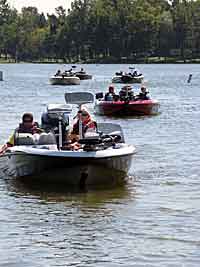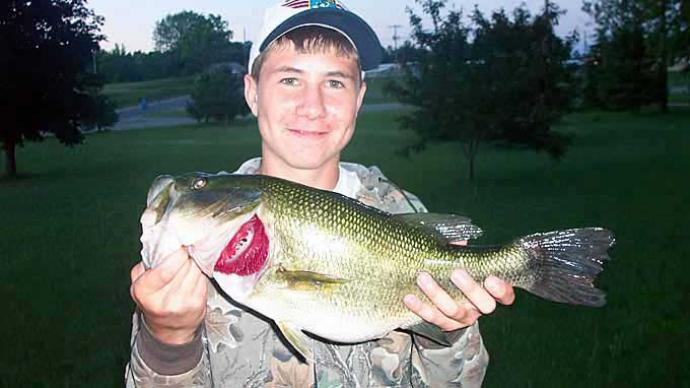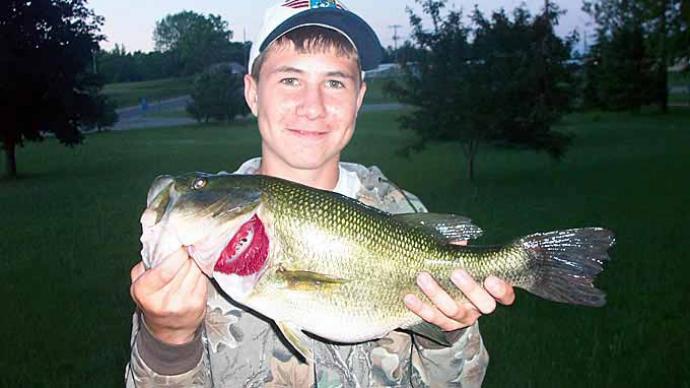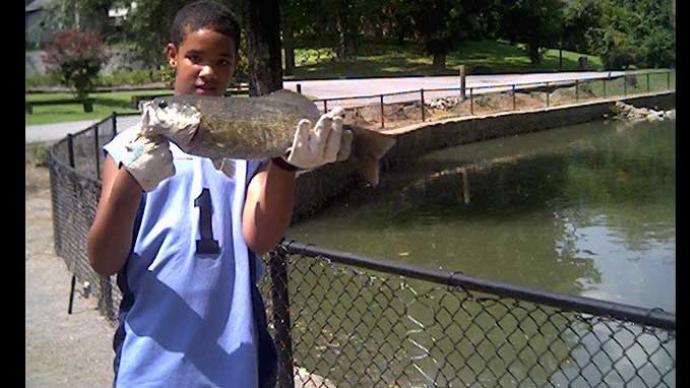
Those of you who regularly read my articles know that I am from the northeast, specifically New York. The land of traffic in every form. Be it foot traffic at the mall, the globally infamous vehicle traffic on our roads, or even boat traffic on the Great South Bay, unfortunately, we have it all. The latter of which is what this article will focus on.
If not by now, you are probably asking yourself, what does traffic mayhem in New York with bass fishing? Well, quite a lot. Before I get into a rant on how it took me 20 minutes to get to a store five miles from my house, I'll elaborate on how traffic and population pertain to your cast-to-catch ratio every time you hit the water in search of bass.
As we all know, recreational anglers have a massive number of variables to consider when searching for bass. For those who fish tournaments, you can rest assured that the number of variables only grows. Water temperature, clarity, frontal systems, light conditions, and countless other variables all contribute to making up an overall pattern that directly affects your fishing action each day. Though in all the variables out there, very few anglers I know consider boat traffic. See, I told you there was a connection!
With the sport of bass fishing and recreational boating growing in popularity almost exponentially season to season, recreational and tournament anglers are forced to share the lake with more and more water-going vessels. These range from other bass boats to cruisers and the always popular jet skis. Individually these aren't that threatening, but when you realize on any given summer day there can be hundreds if not thousands of these watercraft on the lake, you then realize that boat traffic is quite the force to be reckoned with.
When I begin searching for a pattern on a lake, I consider boat traffic just as I would water temperature or water clarity. After all, it directly affects where you can fish and when you can fish there. I will cite some examples, but only you know the water you're fishing and should always plan for and around boat traffic.
A great example of taking such aquatic traffic into account would be Candlewood Lake, located in western Connecticut. By far one of my favorite bass fishing lakes in the northeast, it too has its share of boat traffic; in fact, I call it the "bass fishing freeway." On any given day, you can see boats and watercraft of every shape, size, and color on the lake, making for quite a bit of commotion for anglers. I, however, plan for this and work my game plan around it, just as I would any other variable.
For instance, and this applies to any crowded body of water, if I have one or two main lake hot spots that I know will produce fish, I'll always make it a point to hit those spots as soon as the tournament begins. This is because at 6 am, you can count the number of boats on the lake on the one hand. There is no recreational boating traffic. Aside from not having my fish disturbed, there is also a safety issue. The last thing I want to do around noontime is trying to hold myself on that spot with my trolling motor while having boats whizzing by on both sides. I essentially became a stopped car on a high-speed motorway. Not exactly fun or safe, for that matter.
So once again, I treat traffic like any other variable and incorporate it into my overall fishing plan. If I know certain coves are popular with recreational boaters to anchor up and enjoy the sun. I'll get there first thing in the morning and fish before traffic becomes an issue. This enables me to capitalize on any fish that spot offers before it becomes disturbed or impossible to fish because of the sheer number of watercraft in there. Candlewood again is an excellent example of this. However, I'm sure right about now you're thinking of a spot on your lake that is similar to the coves and bays that I just mentioned.
The same applies to the shoreline. Main lake shorelines are the ending point for the wakes of every boat that passes. I think we have all been rocked back and forth until our heads are spinning by the constant boat wakes that deflect off the shoreline as well as those directly from passing boats. This again is something to consider, and perhaps it may be a good idea to fish shorelines exposed to highly trafficked areas first thing in the morning before such wakes and waves become an issue.
This is not only for convenience. It's hard enough trying to catch bass, period, never mind while holding onto a pedestal seat for dear life as the boat is rocked by the three-foot-high wake of a passing cruiser boat also for safety.
Some larger bodies of water, such as the Great Lakes, the Hudson River, the Potomac River, and similar bodies of water, also have watercraft whose wakes can vaporize a bass boat. A great example of this is the Thousand Islands / Lake Ontario region located in New York. Because of the size of the body of water and the commercial traffic that uses it, the bass angler and boater, in general, must be on a constant lookout for container ships and barges that can be as long as five city blocks. The wakes from such ships can be nearly ten feet high and pack a wallop that can pick up a bass boat near the shore and deposit it rather roughly on the shore! Again, this is why one must consider boat traffic for all aspects of fishing, for both fishing success and overall safety on the water.
However, fear not, there are several things one can do to ensure that the day will not be ruined by heavy marine traffic.
The first thing I like to do is on practice days of a tournament, is first to find spots that I know will not be heavily trafficked by boats. These include weedy bays, shallow back coves, and anywhere that recreational boaters might not deem "scenic" or pretty enough to take the time to visit. Once found, I like to save these spots for midday where the boat traffic is at its height, provided other variables don't make it a spot that relies on the time of day and such.
In addition, we, as bass anglers, have a rather distinct advantage over the rest of the boating set. Generally speaking, bass boats have a relatively shallow draft. This means that we can go where others in larger, deeper draft boats that reacquire more water can't. This is something that should always be used to your advantage. Those in aluminum or flat-bottom boats can capitalize even more on this fact. Trying to find fish where others can't go eliminates the problem in its entirety, which is just a great thing if you ask me.
For those of you that prefer to fish docks and man-made structures, I always make it a point to try to locate such items in no-wake zone coves and channels. This ensures that I will not have to fight battering wakes from high-speed boats all day. I also won't have to worry about becoming roadkill on the aquatic superhighway because a boater doing 60 was not paying attention to where they were going and failed to notice me at a dead stop.
Another interesting observation I've discovered is that the further back into no-wake zones one goes, the better the fishing gets. Initially, I could not figure this out. However, I think now, after a year of experimenting, I have finally got it.
It's not a secret that most bass anglers are rather fond of speed. Why else would there be a 225 on the back of a boat that could as quickly be pushed by a 125? It turns out, and once again, this is my hypothesis, that a lot of bass anglers will not take the time to idle 15 to 20 minutes back into a no-wake zone cove or bay to fish. This leaves the fishing rather unpressured other than from dock anglers. I have used this to my advantage many times. The more I see it work, the more faith I put into such an approach.
Finally, assuming you will be fishing a body of water more than once, as far as boat traffic goes, make mental notes. Make a mental note of when the traffic gets started. Make a mental note of where most of that traffic is or is going to. And make a mental note of where boats anchor up and such. You then can begin to plan around such things and put more bass in your wells.
I hope this has given you a bit of insight into a fact of life that we all have to live with but usually complain about, myself included, on some days.
Catch you on the water...




